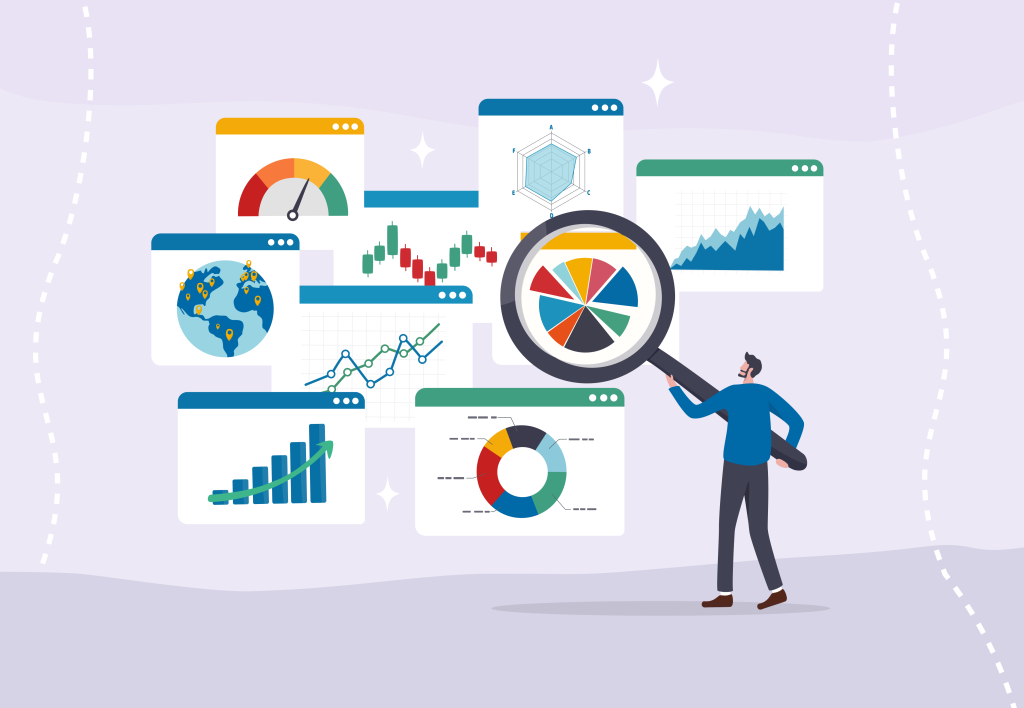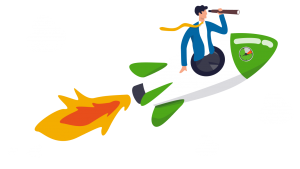10 productivity research studies from 2025 you should know

With AI dominating conversations in the world of tech, business, and… pretty much everything else, it’s no wonder it was at the center of attention for many productivity research studies in 2025 as well.
But AI wasn’t the only topic researchers explored this year. From changing attitudes toward hybrid work to new insights about rest and focus, 2025 brought plenty of fresh ideas about what really makes people productive – and what doesn’t.
Let’s look at the latest findings in the field of productivity and what you can take away from them.
Want to get the most out of your time?
Try DeskTime for free!
Try free for 14 days · No credit card required.
By signing up, you agree to our terms and privacy policy.

10 productivity studies from 2025
1. 76% of offices worldwide use ChatGPT
At DeskTime, we analyzed our own data to see how much employees worldwide use ChatGPT. The results showed that in 2024, 76% of companies were using this AI tool in their everyday work, while the percentage of employees incorporating ChatGPT into their work grew to almost 35%, nearly doubling from the previous year.
The takeaway: If you had any doubts whether or not AI is here to stay, this should dispel them. AI is no longer a niche tool for enthusiasts – it’s part of most companies’ everyday work.
2. AI tools can boost productivity but decrease employee motivation
An employee productivity study of more than 3,500 people found that those who used generative AI for tasks like writing emails or performance reviews produced higher-quality work in less time – clear wins for productivity.
But here’s the twist: when those same employees went back to working without AI, their motivation dropped by about 11%, and feelings of boredom rose by 20%. Researchers suggest this happens because, after collaborating with AI, which can handle the more mentally demanding parts of a task, ordinary work suddenly feels less stimulating and rewarding.
The takeaway: While AI can be a helpful tool, don’t forget to stretch your own creative muscles from time to time.
3. The use of AI may actually slow down work in some cases
While one of the promises of AI has been improved productivity and work speed, that may not always be the case.
In a productivity study conducted by Model Evaluation and Threat Research, 16 software developers completed 246 tasks, using AI tools for half of them. Although they expected that AI-aided tasks would take about 24% less time, they actually took 19% longer than tasks completed without AI assistance. Although the study was small, and we shouldn’t make sweeping generalizations based on it, the insight is quite unexpected.
The takeaway: The human factor and practical, hands-on experience remain invaluable resources that shouldn’t be underestimated.

4. 40% of employees have received “workslop” from their colleagues
An ongoing survey shows that 40% of participants report having received workslop in the past month – AI-generated content that appears useful but is actually low-quality and lacks real substance. Participants estimated that over 15% of all content they receive might be classified as such. Reworking the content then requires more work from the recipient, the sender, or both, resulting in lost productivity.
What’s worse, workslop can negatively impact employee relationships. 53% of respondents said they felt annoyed when they received workslop from a colleague, 38% were confused, and 22% even offended.
The takeaway: AI tools can speed up some tasks, but when used carelessly, they can produce the opposite effect.
5. As the use of AI grows, the workforce is shrinking
A study we conducted here at DeskTime showed two contrasting trends: while the adoption rate and general use of AI were steadily growing in 2024, the number of employees in companies declined over the same period.
It’s too early to panic, however. These results don’t mean that AI is the cause of the shrinking workforce. There are many other factors at play, including the economy, geopolitical situation, and others. But as AI automates more and more simple tasks, employees need to ensure their skill sets evolve alongside the changing work environment.
The takeaway: While AI isn’t solely to blame for shrinking teams, it’s clearly reshaping how work gets done and what skills will matter most in the future.
6. The new work-rest ratio for top productivity is 75/33 minutes
Not all productivity research studies focused on AI, though. At DeskTime, we regularly look at our data to see how the habits of the most productive workers change over time. The original productivity study, over a decade ago, uncovered the now-famous 52/17 work-rest ratio, but the pandemic changed this habit. By 2021, the most productive employees were working 112 minutes and then resting for 26 minutes.
The latest data paints a new picture – now, the top achievers work an average of 75 minutes followed by 33 minutes of rest. One possible explanation for this shift? More and more employees are returning from the fully remote work of the pandemic to hybrid or full-time office work, where the work rhythm is different.
The takeaway: Constant work will not lead to peak productivity – rest periods are just as important as ever.

7. 41% of employers believe hybrid work boosts productivity
More flexible work arrangements have been one of the rare positive outcomes of the pandemic, and employees are unwilling to let this perk go. The good news is that a large portion of employers are on their side.
A survey conducted by the Chartered Institute of Personnel and Development shows that 41% of employers believe hybrid work has increased productivity at their organization. In contrast, only 16% of employers think it has harmed work efficiency.
What’s more, 80% of employees who work in a hybrid regime say it’s had a positive impact on their quality of life and happiness.
The takeaway: Employers who want to retain and attract the best talent need to be flexible in their demands for the in-office/remote work ratio – it’s a factor valued by many employees.
8. Employees who disconnect from work are more productive, but employers are less willing to promote them
A workplace productivity study done in California uncovered what they call “the detachment paradox.” Although employers are well aware that their team members’ ability to disconnect from work in the evenings and on weekends improves their productivity, they are also less likely to consider these “disconnected” employees for promotions.
One possible explanation for this paradox, suggested by the study’s authors, is that employers might value perceived commitment to work more than actual productivity.
The takeaway: Employers should rely less on gut feeling and more on data to reduce personal bias in decision-making.

Be smart about your time!
Use DeskTime for time management, and always stay on top of your team’s efficiency ratings.
9. The global economy lost $438 billion due to low productivity in 2024
Disengagement at the workplace leads to significant economic losses – the State of the Global Workplace Report by Gallup suggests that low productivity cost the global economy $438 billion in 2024. At the same time, a fully engaged workforce could contribute $9.6 trillion to the economy.
The takeaway: Managers have to be able to spot disengaged employees whose productivity is dropping as early as possible and help them boost their effectiveness at work.
10. A four-day workweek can boost productivity and employee well-being
A new trial done in the UK last year once again showed the potential of the four-day workweek. 17 companies with over 1,000 employees switched to a four-day workweek for 6 months, and after the trial period, all 17 have stuck with the shorter workweeks.
A similar experiment in Scotland reported that employee requests for sick days because of psychological reasons decreased by over 25%. One of the organizations involved in the productivity study reported that employee satisfaction with work-life balance increased from 4% before the trial run to 84% 9 months after the switch to the four-day schedule.
The takeaway: The four-day work week continues to show promise – if it’s something that might work in your workplace, it might be worth a shot on a trial-run basis.
What this year’s productivity research studies taught us
From AI reshaping how we work to evolving ideas about rest, motivation, and flexibility, 2025 workplace productivity studies gave us plenty to think about. The main takeaway? Productivity is no longer just about working faster – it’s about working smarter, with the right balance between tech and human creativity.
And as we move toward 2026, it’ll be interesting to see how these trends develop and what new discoveries will change the way we think about getting things done.
Did you find this article useful? Give it a clap!
Psst! You can clap more than once if you really loved it 🙂